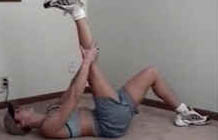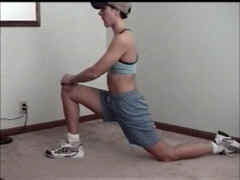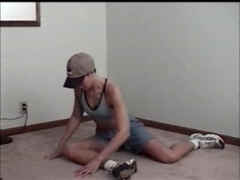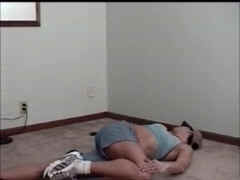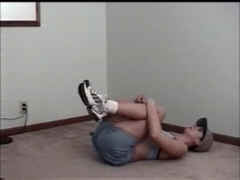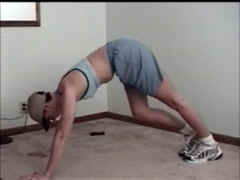Caffeine is found in everything from face creams to coffee. But its effects aren’t yet fully known, reports Joanna Bounds.
We’re a nation of drug users. We take our first hit in the morning and many of us continue throughout our working day.
Addicts say they can’t function without their daily dose of caffeine. Globally, we consume 120,000 tonnes of the stuff each year, making it the most widely-consumed psychoactive substance in the world. And most of our caffeine intake comes in the form of a cup of coffee or can of cola.
And while caffeine consumption is deeply-entrenched in society, the “good” versus “bad” debate has been going on for centuries. This may be because caffeine has the same pharmacological effects on the body as many substances deemed harmful – although that doesn’t stop nine out of 10 people throughout the world using it regularly, say Alan Weinberg and Bonnie Bealer, authors of The World Of Caffeine (Routledge). high times There are many ways of ingesting our drug of choice. Besides coffee, tea and chocolate we can get our kicks from “energy” drinks and over-the-counter medicines. In the US there are caffeine tablets, caffeinated waters, and even lickable caffeine-infused lipsticks from US cosmetics company Hard Candy. Yet the effects of caffeine still aren’t fully understood.
“Caffeine’s effects on the body are complex,” says John Miners, professor in clinical pharmacology at the Flinders University of South Australia. “It affects the nervous system, the brain, the bodily organs, respiratory system and metabolic activity. But there’s still a fair amount of work left to be done on caffeine.” What is known for sure is that caffeine causes the body to release adrenaline, resulting in the “fight or flight” response, which enabled our hairy ancestors to run from sabre-tooth tigers. And, of course, gives you that morning buzz.
But, in the case of caffeine toxicity, it’s also been proven that it can be a killer. High doses of caffeine have resulted in roughly 20 deaths in Australia. The last fatality occurred a few years ago, when a 25-year-old woman collapsed in a bar after drinking a guarana-based tonic (which has since been taken off the shelves). Because the woman had a heart condition, she was careful to keep her caffeine intake low, yet the drink’s packaging did not indicate its high caffeine content.
“Some caffeine-based drinks are called “smart”, “happy” or “energy” drinks,” says Rebecca Smith, food policy officer for the Australian Consumers Association (ACA). “Others are marketed as a thirst quencher and are not the best way to rehydrate after exercise as caffeine inhibits the absorption of water.” The proliferation of such drinks has led to the Australia New Zealand Food Standards Ministerial Council forming a policy stating that caffeine cannot be added to any other products besides cola and energy drinks and those that do contain caffeine must be labelled clearly.
“There is no doubt that the concentration of caffeine in soft drinks and energy drinks has a marked pharmacological effect, which people need to be aware of,” says Professor Miners. “People monitor the amount of caffeine they drink but are unaware of the concentration of caffeine in other products. Energy drinks are the main area of concern.”
Even though death by coffee isn’t a concern for most of us, kick-starting the day with a large latte can lead to a caffeine addiction.
“Caffeine has the same sort of mechanism as cocaine or heroin, but
obviously with much less effect. This is part of the reason why people become
addicted to it,” says naturopath Ilana Lamont.
If you’re trying to kick the habit she advises weaning yourself off caffeine, rather than going cold turkey, and says withdrawal symptoms can include headaches, fatigue and depression. And it doesn’t take long for withdrawal symptoms to kick in.
“A lot of people get tired and depressed when they are coming down from the effects of caffeine,” says Lamont. “And that can be as soon a couple of hours after they’ve drunk their last coffee. Which is when they reach for the next cup. So it’s a vicious cycle.”
addicted to mug And be aware, says Professor Miners, that caffeine ffects people differently.
“In terms of effects on the body, and the rate at which it is eliminated, individuals handle caffeine in different ways,” he says.
“It’s influenced by factors such as age (children eliminate caffeine more quickly) and whether you smoke or not. Smokers eliminate caffeine at twice the rate of non-smokers. That’s why some people get heart palpitations and others don’t, and why it keeps some people awake but not others.”
And caffeine-induced insomnia isn’t urprising when you think that, if you drink a large cup of coffee at 3pm, 50 per cent of the caffeine will still be in your body six hours later. The reason it keeps you awake, says Lamont, is because the caffeine is stimulating your brain at a period of time when it’s not meant to be active.
Some people should avoid caffeine more than others. Pregnant women are especially at risk, as revealed by a study by Aarhus University Hospital in Denmark earlier this year. It showed that women who drink more than eight cups of coffee a day triple their risk of having a stillborn baby compared with non-coffee drinkers. A report in the Lancet Medical Journal also revealed that women who drink more than one cup of coffee a day are half as likely to conceive as those who drink less than a cup a day, as caffeine stimulates the production of chemicals in the body that slow conception.
user friendly But it’s not all bad news – caffeine does have ome positive effects too. Researchers at the University of Queensland have discovered that giving prematurely-born babies minute amounts of caffeine, rather than the drugs that are currently used, is a safer option when it comes to treating breathing problems.
Caffeine is also useful when it comes to the morning-after. A hangover equals a headache because alcohol enlarges the blood vessels in your brain. Caffeine does the opposite and constricts blood vessels, hence its use in over-the-counter painkillers.
It’s been proven that drinking a cup of coffee before exercising enables you to work out for almost a third longer. Plus, researchers at the Australian Institute of Sport have discovered that caffeine triggers muscles to start using fat as an energy source instead of carbohydrates.
So, is caffeine good? Or is caffeine bad? The solution to the onundrum, says Lamont, is to carefully monitor how much you’re putting into your body.
“Keep a log of how much chocolate, ola, coffee and tea you’re having each day,” she says. “Have a couple of cups of coffee a day, but not eight or nine, and drink lots of water to counteract its diuretic effect. Keep your intake to a minimum and you won’t be doing your body as much harm.”
beauty buzz As well as putting affeine into your body, the latest innovation is rubbing it into your skin. Facial toners, cellulite creams and body-contouring products now often contain caffeine, with companies claiming that it helps to firm and tighten.
French cosmetics company Clarins uses caffeine in some of its products, including face creams such as Contouring Facial Lift, and Shiseido’s celebrated anti-cellulite Body Creator also contains caffeine. The Fuji Spinning Company in Japan has even manufactured caffeine-infused underwear which, it claims, helps activate fat-dissolving enzymes.
Beauty insiders claim that caffeine-based creams work as diuretics, draining fatty cells of fluid resulting in firmer skin. But health professionals are dubious about the beauty benefits of the drug.
“It’s difficult to see the reason for including caffeine in beauty products,” says Professor John Miners.
And naturopath Ilana Lamont thinks it may just be another in a long ine of wonder compounds touted by cosmetics companies. “I can see no viable way that caffeine does anything,” she says. “I think it’s little more than the latest trend in the beauty world.”


